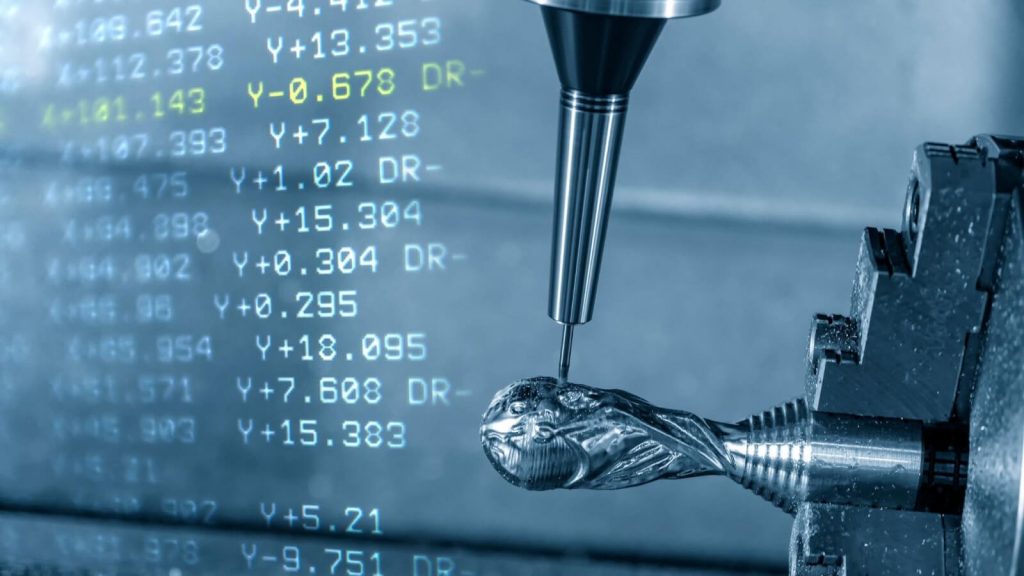Despite all the advancements in modern technology, CNC prototyping is understandably not cheap. After all, it requires highly qualified experts, specialized equipment and sometimes the use of expensive alloys. Prototype production during the design stage will provide you with great help and can reduce the total project cost of CNC prototype design.

What does CNC prototype production cost include?
In order to understand how to reduce the cost of prototyping, let’s first look at the list of major expenses.
Large chunks of metal. The basic principle of custom CNC machining is that first, you need to cut a large amount of metal. In the prototyping and low-volume industries, what is often referred to as the “blank” is actually larger than the total mass of the final part (in some cases, up to five times). This is why choosing the right alloy is important because you are actually paying 3-4 times the quality of the part.
Set time. Once the technical drawings enter the CNC service, there are inevitably preparation stages when preparing the processing equipment, writing NC programs, and manufacturing or assembling molds.
Processing time. Once preparation is complete, machining proceeds. The main parameter in CNC rapid prototyping is the total time required for the process. It includes the time it takes to make the actual cut, change tools, load and unload parts, and the time it takes to move CNC machine parts between machines if necessary. This expense is by far the largest on the list, and it is absolutely necessary to reduce processing time.
Extra time. Any type of manufacturing process will inevitably have some administrative pauses due to documentation, shipping, etc. These only depend on the quick prototyping part manufacturer, so you must choose and ask them how long it will take to sign a contract or ship the CNC custom machined parts to your location.
Therefore, after analyzing all the expenses that affect the final CNC prototype cost, we can draw conclusions and list a series of tips to help you reduce the CNC prototype cost of your project.
Tips for reducing prototype costs
Choose the right metal
Many beginners don’t really think about the materials. They come in either the default construction steel or a cooler material like titanium or stainless steel to prevent rust. Both choices can be wrong or right. What you should understand here is that the price of the alloy is not the deciding factor. For example, if you are machining a large volume of workpieces, it is better to choose aluminum because it can be machined faster, and the economic benefits of machining time will make up for the additional machining costs.
Another problem is that when you need a material to have special properties, for example, to be able to withstand high temperatures, and you choose a material of a higher grade than it is, that’s going too far. For example, you need to have 800 degrees Celsius and you need to go to 950 degrees Celsius, which is a material that is harder to process and much more expensive, but you don’t need those extra 150 degrees Celsius.
Add basic elements
Setup time can be reduced by adding special surfaces to the part that can always be used to secure the product prototype to the machine. For example, if you are making a shaft-type part, you can add two tapered holes to its surface so that the part can be fixed to the center of the lathe. Alternatively, if the part is a box type to be milled, add a plane with two holes perpendicular to it.
Avoid complex surfaces
If your choice is rapid prototyping, it is not recommended to use complex surfaces with high surface finish in CNC parts. The reason for this is that complex surfaces are often finished with small end mills with spherical tips. It has a very small step (about 0.1-0.05 mm) and must touch the entire surface from one side (if you go both ways, there will be small ribs). When the area of the complex surface is large, you will need several hours to complete.
Appropriate accuracy
Many designers believe that the more precise the part, the better the surface finish and the better the appearance (glossy polished parts look cool, right?), but high tolerances and extremely high surface finishes mean prototyping manufacturers must use grinding machine to achieve such size and surface finish.
In order to grind parts, they need to have a minimum hardness. Then carry out heat treatment. Now, heat treating takes at least a day because you need to heat the part, leave it there, and then cool it. Therefore, it is best to have an IT9 or below, Ra 3.2 or worse surface finish for most surfaces, with only the most important surfaces having higher tolerances.
The above are tips on reducing the cost of CNC prototype production. If you want to know more, please contact the sales representative of PROTO MFG.
PROTO MFG provides a wide range of manufacturing capabilities and other value-added services for all of your prototyping and production needs. Visit our website to learn more or to request a free, no-obligation quote.